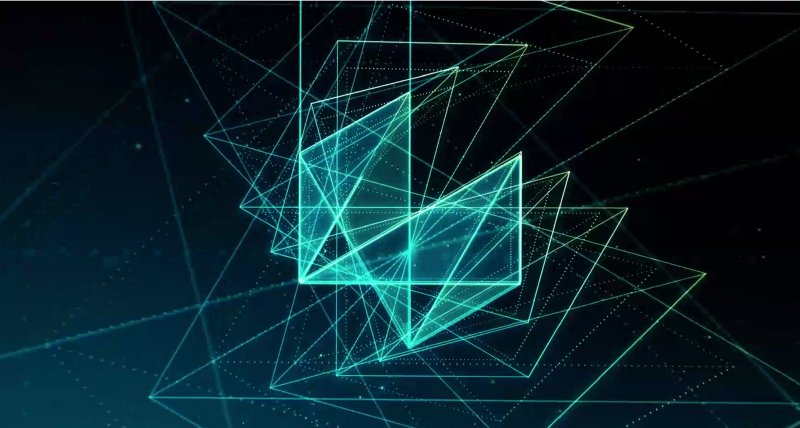What is the true business value of Digital Twins? Listen to Part I in the podcast series, “Digital Twins: The gateway to autonomous industrial facilities”, created in collaboration with Petroleum Economist.
BK: Hi, and welcome to this special podcast, brought to you by Hexagon. My name is Brian and in this first episode of the podcast series, “Digital Twins: The Gateway to Autonomous Industrial Facilities”, together with Adrian Park, Vice President of Pre-Sales and Hans Kouwer, Director of Industry Consulting, both with Hexagon’s Asset Lifecycle Intelligence division, we explore the important role of digital twins in facilitating digital transformation and the business benefits that they create. This podcast series is created in partnership with Petroleum Economist and also broadcasts on PE Live Broadcasts, and this conversation is moderated by Karolin Schaps, a regular contributor to Petroleum Economist. Thank you for listening and we hope you enjoy.
KS: Welcome to this PE Live Podcast, the first in our new series called Digital Twins – The Gateway to Autonomous Industrial Facilities, in association with Hexagon. As the pace of digital transformation accelerates, digital twins have emerged as powerful tools for managing industrial facilities. This podcast will discuss the business value of digital twins, how they contribute to sustainable projects and operations, highlight practical examples of successful digital twin implementations. We’ll also explore their important role in facilitating digital transformation, how they are paving the way towards a future of autonomous operations.
I’m Karolin Schaps, energy journalist and contributor to Petroleum Economist, and I’m joined today by Adrian Park and Hans Kouwer from Hexagon to talk about realising the business value of digital twins. Hello to you both. Thank you for joining us.
HK: Hello, Karolin.
AP: Good day, Karolin.
KS: Adrian Park is Hexagon’s vice president for presales in the EMIA region. He has over 40 years of experience working in the process industries and joined Hexagon 16 years ago. Hans Kouwer is Hexagon’s director of industry consulting in the EMIA region, and he has over 30 years of experience in the process industry with half of those spent at Hexagon.
So let’s start with a short introduction to the company. Let’s tell our listeners a bit about what Hexagon does. Adrian, maybe you can kick us off.
AP: Sure, Karolin. So, Hexagon is a Swedish technology company. We’re headquartered in Stockholm. We’re about were 24,000 employees in 50 countries and an annual turnover of around four and a half billion euros each year. Our focus as a company is on the enabling of organisations to go beyond automation into autonomy, which is all about how to reduce or eliminate the need for human intervention. Our solutions today are used extensively across industries. So, for example, about half of all the oil and gas and chemicals produced worldwide use our technologies. And in the industrial manufacturing space, about 95% of cars, 90% of aircraft, and about 75% of all smartphones produced actually use our Hexagon technologies.
Now, Hans and I, we come from a division within Hexagon called Asset Lifecycle Intelligence. We’re about 3,000 employees, and we work with complex industrial facilities such as oil and gas plants, chemical facilities, metals and mining, power, food, beverage, and pharmaceuticals. And we provide solutions for the design, construction, operation, and maintenance and cyber integrity of industrial facilities.
KS: Thank you. That’s some very impressive figures there in terms of how much your technologies are being used.
Let’s get on to the topic of digital twins. And Hans, maybe you can tell us a bit about what role digital twins are playing in the Hexagon asset lifecycle approach.
HK: Yeah, sure I can, Karolin. So yeah, digital twins really provide a digital thread, or often also called the digital backbone, which connects all the phases of the facility’s lifecycle. So, the digital twin is ideally built incrementally, so from the early phases of the design engineering, and evolves then throughout the asset lifecycle. So, throughout the entire lifecycle, the information is then sustained and kept evergreen. The digital twins should always provide access to assess facility configuration as well as the full history of it and provide support for upcoming projects.
So at each phase of the lifecycle, the different solutions are typically integrated with and exchanged through these digital twins. And with that we take an agnostic approach where the digital twin can be integrated with either Hexagon or third-party solutions. So, for example, during the detail design phase our Hexagon 2D, 3D design tools would be integrated. While during the construction phase, supply chain management, construction, and completion solutions will be integrated. And once we get into the operations and maintenance phase of the lifecycle, systems such as maintenance management systems, asset integrity systems, and MES, reliability systems, as well as data historians can be integrated with this digital twin digital thread.
So, yeah. This digital twin has a very important role in supporting also what we call the 45 up to 80 BIM definitions.
KS: Lovely. Thank you. Interesting to hear how that’s being applied. And I believe the concept of digital twins is widely recognised within the industry now, but I feel like there’s still quite a lot of confusion in the market about what exactly it is and does. Why do you think that is?
AP: You’re right, Karolin. And whilst the high level concept of a digital twin is a virtual representation of a physical entity is simple and well understood, beyond that as to what a digital twin should actually contain, what it should be capable of doing, there are many different opinions and approaches today. For example, the approach that we take is centred on the configuration of the industrial facility. We capture it, we consolidate it, we validate 1D, 2D, and 3D data, and then provide contextualised index and multidimensional visualisation. We typically do not consolidate data from real time systems or transactional systems such as maintenance management systems, but we tend to pull that data on demand from the systems once needed and show some context behind what we use the term single pane of glass. So, we minimise the need to duplicate data across the IT landscape.
Now, there are other approaches. For example, some approaches consolidate all possible information, including real time data and transaction information, into a data lake, and then visualise and analyse this information. The reliability of that sort of approach is very dependant on the frequency of updates of the data lake. Otherwise, your data lake can quickly turn into a solid data swamp of outdated information.
HK: Yeah. And perhaps in addition to that, Adrian, we’ve also chosen to provide information management capabilities within our digital twin, right? So, information and documentation can be maintained within the digital twin itself. So, and that, of course, includes support for work processes like management of change, deliverables, reviews, document control, technical queries, actions, and many more of those type of processes. So, there’s obviously no right or wrong here, and different approaches can be combined, so we frequently work with customers that combine our digital twin with their data lakes.
But also, other customers implement multiple digital twins, that’s also what we see, where our digital twin, for example, will be combined with a process twin, which is more focusing on process simulations. And we ourselves extend the scope of our digital twin also into the geospatial arena in order to provide a situational awareness where we support, for example, tracking of people, vehicles, tools, and so on.
KS: Interesting to hear about some of those applications, and I think it’s quite clear that the market for digital twins is expanding quite rapidly. A lot more companies are taking up this tool. Why do you think that is?
HK: Well, I think that there’s an increasing recognition now of the foundational role that the digital twin plays in digital transformation. So, for digital transformation initiatives, it’s mandatory to have an authoritive first of the consolidated source of information. And that’s absolutely a prerequisite for advanced analytics, for automation, as well as the journey towards autonomy. After all, if the basic information about the components, about the equipment, about the configuration of your facility is not complete or incorrect, then no amount of artificial intelligence or machine learning will give you the useful results. So digital twins are really having a foundational role in that.
So they also provide really concrete business benefits. So, for facility operations, these benefits could, for example, include reduce the time spent on finding and validating information. If you’re able to find the information at the moment you really need it, that will enable people to make faster and better decisions. The time to find and validate information can typically take sometimes 20 to 30% of people’s time because they have to find the information in multiple sources, multiple isolated silos of data. So that’s very difficult to find and validate information. And better and easy access to information can reduce, obviously, that waiting time, and that will improve the time on tools, and it will help to improve first time fix rates as well as similar type of KPIs.
AP: Yeah, Hans. I think in addition to a few of the items we can mention, things like for example, improving the planning of work, showing the location of work, like maintenance inspections in context to the 3D physical plant, just answering these basic questions like, do I need a stepladder or do we need scaffolding or how do we do the ingress or egress onto a particular area where work’s going to be performed?
Also, things like being able to demonstrate compliance to regulatory authorities. If we capture all changes of the digital twin with a timestamp and who has changed the information and provide also full visibility of the management of change process. And that reduced substantially the amount of time needed to prepare for audits.
You could also do things like show real time information of maintenance notifications along with engineering data. And that can be really useful for troubleshooting the equipment, for example. And it’s also possible to do things like reduce the dependency on individuals by capturing all that information inside the digital twin, then we are less likely to lose knowledge as workers leave, whether it be through retirement, which is an increasing issue in many parts of the world, or other reasons for that matter.
I mean, there are many other potential benefits that could be mentioned. We probably just don’t have time to really go through them all today.
KS: So, I think you made it quite clear that there’s a lot of operational benefits by applying digital twins. Are there any other benefits that sort of go beyond operations?
AP: Oh, sure, Karolin. And that’s a very good point, actually, because many people do see the digital twin as in an operations perspective. But digital twins can also play a significant role in reducing risk and costs in projects, whether it be a greenfield project or a brownfield project. For example, digital twins, you know, they provide this single source of truth where everybody can actually find information and documentation, where it’s consolidated, reducing the need to consult multiple silos of information. They can also be used as a platform for security sharing and exchanging information across the value chain. So, our digital twin, for example, is frequently used by suppliers and contractors to submit information to the owner. The digital twin can also be used to incrementally consolidate and validate data which is being submitted and checking for data coming from vendors and contractors is correct, consistent, and compliant with the different standards of specifications that people have on a project. And by identifying any inconsistencies or noncompliance early in the project, it’s also possible to do rectification before these errors can potentially cause an issue in the project that might create rework or delays.
Digital twins can also be used as a platform for reviewing that data document. So once contractors or vendors actually submit data and documents into the digital twin, it can then be sent on review, comments can be consolidated. We also can manage actions and technical queries across the project landscape as well within the digital twin. And we can also do a multidimensional visualisation, that’s something that Hans mentioned earlier, by again taking information in and integration with project control systems. We can do 4D, 5D visualisation for example, showing progress and cost information.
In a construction type of environment, by having near-real-time access to and visualising material availability of materials being requisitioned, what was being purchased, what’s been delivered to site or installed, and having constraints like availability of credit and cost availability, you can then start doing clever things like optimising construction sequencing and being more agile during the construction phase of the project.
And digital twins can also help greatly in the handover of information, from projects to operations, without really having to move any data, simply changing ownership. And that can save considerable amount of effort, time, and costs. You know, a survey’s done not only by ourselves but other people show that typically handover costs amount to somewhere between 1 and 3% of project costs. And these can be practically eliminated by incrementally preparing the data and handing over the information to operations within the digital twin itself.
KS: Thanks, Adrian. That was really interesting overview, actually. And you mentioned brownfield projects. And I’d be very curious to understand how easy and whether it’s actually feasible to create a digital twin for an existing facility and how much effort is actually needed to put that into place.
HK: Okay, yeah. Absolutely, there is support for that, Karolin. So, in this case, that’s for most of our digital twin implementations where customers have facilities that’s maybe decades old, and most of their information is then often unintelligent and unstructured formats. So, in these cases, we retrospectively build a digital twin from the information sources that are available. So, for that, for example, technologies can extract information from unintelligent to decode formats such as older cards, micro station, from PDF files, office files, and even extract information from, for example, title blocks. Tech references can be created, including the audibles that will be used for navigation purposes.
You asked about the amount and the effort needed for this. So, it’s very straightforward. So once the rules for extraction and pulling are configured, the process is largely automated. So, this unstructured information can then be combined with any structured information that’s available from legacy data sources such as, for example, maintenance systems and others, and that will help to build this digital twin.
We also see that if a 3D model is not available, that laser scans can be used for the 3D digital reality capture. And then the geotech simulators can be used again for the navigation between the 1D, 2D, and eventual other 3D sources.
So yeah, that’s very useful, as well as the reports can be run to cheque if data from those sources is really consistent. And for example, so reports can be around to see if the expected documents are available for specific tech. So, we can really identify where expected documents appear to be missing.
AP: Yeah. And it’s probably worth mentioning, Hans, that, you know, once we’ve built the digital twin, then we can actually put in processes such as electronic management or change to ensure that the digital twin is maintained in an evergreen way. We typically include an advanced management change process in our digital twins, but includes engineering capabilities, which is able to cope with the complex change scenarios frequently encountered on industrial facilities, where the same equipment or the same documents might be subject to multiple changes, which are ongoing at the same time. So, these simultaneously changes would need to be managed.
KS: You both have a lot of experience, obviously, advising your customers on this, and I’d be very curious to hear about a couple of examples where customers have applied digital twins successfully. Could you run us through a few case studies?
AP: Yeah. We can do that, Karolin, but for reasons of non-disclosure, we won’t actually mention any specific names today. But I will give you an example, and I think Hans will probably come up with an example as well. You know, one customer we have is a European based oil and gas exploration and production company. They’ve grown rapidly over a number of years through acquisition of major capital assets of other companies but have divested. As a result of this, they’ve inherited many different legacy systems ways of working and data quality overall was very poor, and that was resulting in both safety issues as well as inefficiencies. So, the implementation of a common digital twin embracing all the different facilities within the area of operations enabled them to consolidate data and documents into one common system, improve the overall quality of information and availability of it, and enabled them to implement common ways of working and enabled them to work more effectively with engineering contractors as well. The solution includes the migration of design information, both 2D and 3D design tools, and integration with information asset management and data storage systems as well. So that’s a system that they built up over the last 18 months, and it’s been so far very successful.
KS: Perfect. That sounds really interesting. And Hans, would you be able to run us through another sort of case study from your customers?
HK: Yeah, absolutely. I was just about to say we have another and a very nice example, which is a customer, it’s a large ENP based out of Asia, and that’s where our digital twin is being implemented first, on an existing major refinery, and it will then be rolled out across their other refineries later. So, the solution implementation included the capture and consolidation of 1D, 2D, and 3D data coming from multiple sources and includes extensive integrations with 2D, 3D design tools, but also with our maintenance system, SAP in this case, data historians, integrations with two external document management systems, with Primavera for scheduling, a system for managing the lab results, a system for manufacturing intelligence as well as a reliability system. Yeah. And it also included 40 reporting from the scheduling system as well as corrosion loop visualisation. So, yeah, it’s a very interesting story, there.
KS: Thank you. Some great examples to give our listeners a bit of an idea of how this has actually been implemented.
And I’m wondering, with these systems coming in, especially on assets that have been around for a long time and running on different systems, how disruptive is introducing a digital twin for people to actually have to work on it and use the systems every day? Do they need a lot of additional training?
AP: No, actually, not really, Karolin. Of course, most people are more or less used to this already in their private life, right?, who is not looking at their phone all the time to find information. So yeah, similar for information made available from the digital twins. So typically, time to introduce the system to someone else needs to find information takes about 30 minutes but can even be less. So, it’s pretty straightforward.
KS: Oh, that’s quite impressive. I hadn’t expected that. I would have thought it takes a lot longer. So that’s very positive.
And I’m wondering, what are the main risks associated with using a digital twin? I’m thinking about things like cybersecurity and risks surrounding that. Could you run us through that?
AP: Well, Karolin, I mean, cloud hosting of digital twins these days is really secure. They typically deploy sophisticated automated monitoring tools that go 24 by 7 operations of support staff who are actually monitoring the system and can detect whether anything of value is happening. Our digital twin offering is ISO 27001 certified. It’s got SAP 2 certification as well. And all the data and all the documents were encrypted, both egressed inside the system, but also in transit. So really these systems these days are extremely secure, probably as secure as your banking system, for example, you might use in your daily life.
KS: Okay. So that sounds very secure in that case.
And Adrian, just to finish off, would you be able to run us through a bit your thoughts on where you think digital twins are going in future? Which sort of direction are they heading into?
AP: Well, one of these we’re working on is trying to remove the barriers to realising digital twins to make it easier to get there, for example by using artificial intelligence, machine learning to extract more intelligence, notably in unstructured documents and laser scans, and then back modelling those laser scans to create an intelligent 3D model and for existing assets. So, this is just part of what we call the smart digital reality, which is really going beyond the digital twin by providing a continuous feedback loop between the real world and the digital world, which gives us then a sort of a line of sight to enable people to do business decisions based on up to date situation of a facility at any particular time. I mean, the smart digital reality’s a big topic in itself, but might in fact be a topic for perhaps a future podcast.
KS: That’s a very good idea. I think either way, there’s definitely a bright future for digital twins and smart digital reality in the industry.
But that’s all we’ve got time for today. Thank you both Adrian and Hans for joining us. Been a pleasure to listen to your thoughts on the topic.
So thank you, everybody, for listening to this episode. Don’t forget to subscribe to PE Live Podcast to get notifications of the next episodes in the series and about digital twins, and as well as to access our previous episodes on demand. Thank you very much.
















